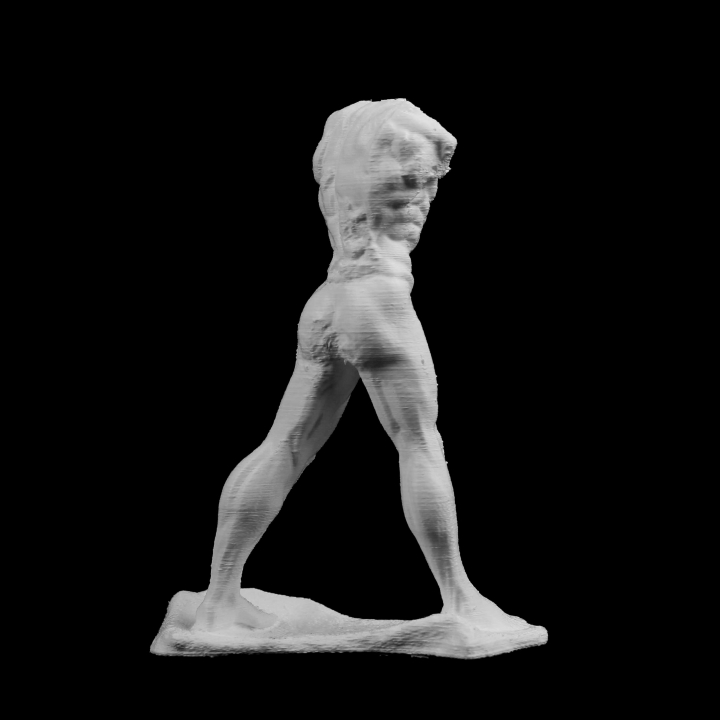
The Walking Man at The Musée Rodin, Paris
myminifactory
This work's complex genesis shows how receptive Rodin was to Henry Moore's idea that artists should "reconsider and rethink" their concepts. Known as Saint John the Baptist or First Impression, this sculpture was created in 1899-1900 using studies from 1878 for the torso and legs of Saint John. A clay torso modelled around the same time was rediscovered circa 1887; these early studies also provided the legs. Despite their condition, Rodin assembled them in the late 1890s. The resulting figure is slightly off-center; the torso leans forward and swivels to the left. The subtle inaccuracies of the adjustments enhance the sense of movement. The missing arms reinforce the artist's intention to break away from traditional "full figure" sculptures. The choice of a more universal title demonstrates Rodin's focus on expressing essential ideas rather than specific or fortuitous ones, as seen in Saint John the Baptist. This object is part of Scan The World, a non-profit initiative launched by MyMiniFactory to create a digital archive of fully 3D printable sculptures, artworks and landmarks from around the globe for public access. Scan The World is an open source community effort; if you have interesting items nearby and want to contribute, email stw@myminifactory.com to learn how you can help.
With this file you will be able to print The Walking Man at The Musée Rodin, Paris with your 3D printer. Click on the button and save the file on your computer to work, edit or customize your design. You can also find more 3D designs for printers on The Walking Man at The Musée Rodin, Paris.
